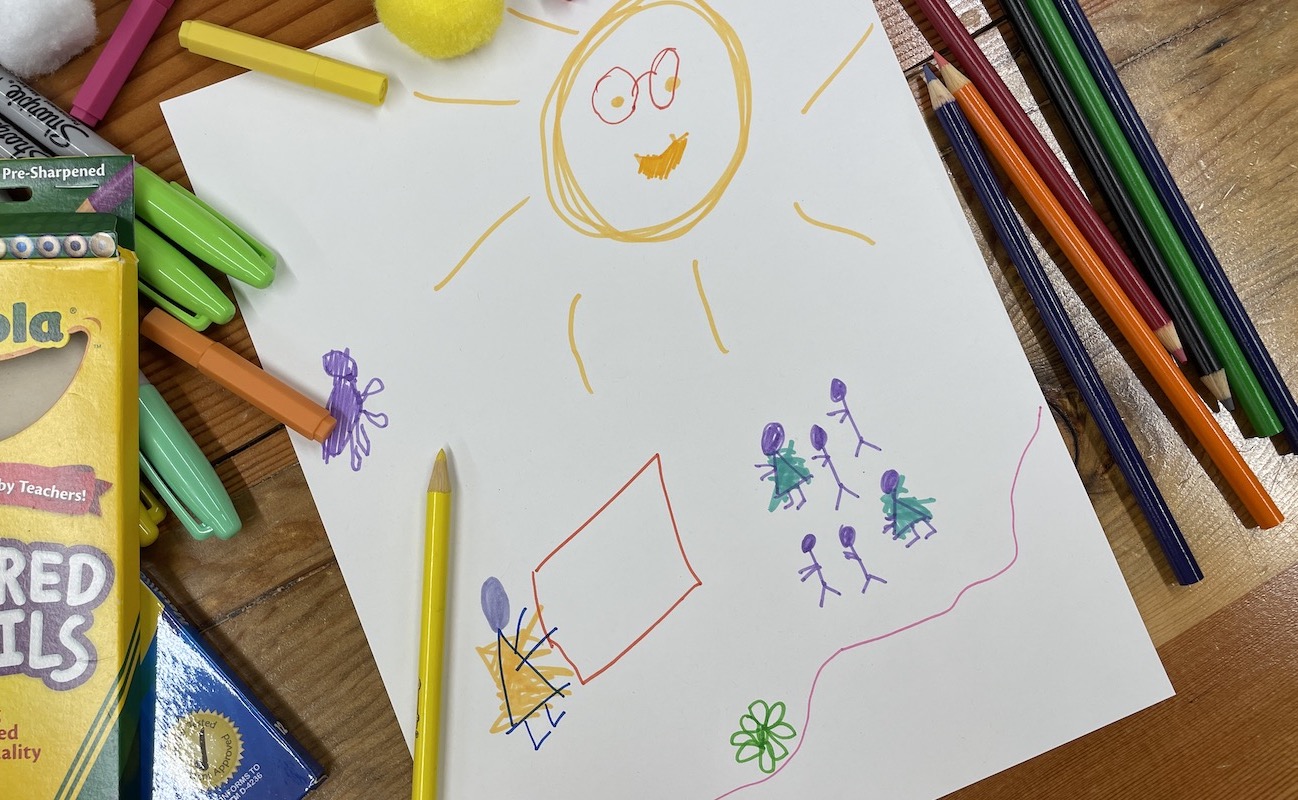Everything I Know About Facilitating Workshops, I Learned Working at Summer Camp
I did the math, and from my time working in summer camps alone, I’ve got roughly 1,400 hours of facilitation experience with kids. Every day at camp always had a predetermined schedule, which as you might recall from the first blog in this series is essential to workshop planning as well, but the success of that plan boiled down to who was running the activities and how. Similarly, having a plan for how a workshop should run is all fine and dandy, but how you influence other people to successfully realize that plan in the moment is a whole other skill in and of itself.

Great facilitation takes practice! It certainly won’t be perfect the first time… or the second time, or the third time. At camp, I had plenty of brutally honest kids to clue me into when my facilitation wasn’t stellar. In a professional setting, it might be harder or more consequential to get that kind of feedback on your facilitation if you’re in a workshop with important stakeholders. So let me save you the trouble!
I’ve got some hot takes in here; I recognize some ideas might be a little counterintuitive. But all of these are tried and true methods for successful facilitation, some that I was taught and some that I’ve learned the hard way.
Tell, don’t ask, when giving instructions for the next task
Ask a kid if they want to clean up their toys and the answer will always be ‘no,’ but tell them it’s time to clean up their toys and they just might get up and do it without resistance. Framing what you say as directions rather than a request can increase the likelihood that a kid will listen to you the first time. As any parent will probably tell you, this doesn’t work every time, but it’s a good starting point.
If saying no to the request is not an actual option, then don’t frame it as a question. Young kids (and senior execs) might not recognize that your question is actually an instruction. Asking gives the kid the option to say no. We love that when it comes to important things like consent, but when it comes to things that a kid should do but probably doesn’t want to like chores or sharing, asking often backfires.
Now what about with adults? Well if you’re in a meeting and someone says, “do you guys want to do XYZ next?” rather than just saying, “Ok, the next thing on the agenda is XYZ,” just like the 5-year-old, your answer is probably going to be ‘no.’
With adults, whether they’re peers or superiors, the key to telling is explaining the rationale for why a decision has been made and how that will help the workshop move forward.
Making this switch in how you communicate can certainly be tough, especially if you worry about coming across as demanding or controlling. For many researchers, the first instinct is to ask questions since that is essentially the point of our job, but when it comes to leading a meeting or workshop, where you’re in charge of sticking to the schedule and hitting your goals for the session, telling is often a better, more efficient route.
Side note: Asking is better in many other workplace situations, especially for leaders, but that’s a whole other topic. Here we’re just talking about workshop facilitation.
With adults, whether they’re peers or superiors, the key to telling is explaining the rationale for why a decision has been made and how that will help the workshop move forward. By communicating in a matter-of-fact way and providing a rationale, you not only make things simpler for others, but you also demonstrate that activities have been well thought out, have a purpose, and won’t be a waste of time.
Remember, if you’ve planned the workshop intentionally, you likely have already asked stakeholders if certain activities are going to work with the group, so during actual facilitation you can skip the asking. This advice comes from experience of things going awry – a VP-level stakeholder said no to the activity because they thought it would be a waste of their time, but more on that in the next post. Here’s an example of how I would tell, not ask, if I were to run this workshop again:
“We’ve done the initial analysis, now we need your help. We’re the experts on this research, but you’re the experts on your company. Only you know the implications of these insights, the teams they relate to, or any barriers within your organization. Individually, you will have 10 minutes to review all of these emerging insights and add comments sharing your relevant organizational knowledge. After this activity, we’ll come together to use what you’ve all added to make better- informed recommendations for your product roadmap.”
Successful instructions provide limited choices
Ever asked a preschooler whether they want to finger paint, play redlight greenlight, make macaroni art, play tag, take a nap, or go on a field trip to the library? Odds are they will just stare back at you with no response.
Or think of any streaming service you’ve used where you’re bombarded with seemingly endless shows and movies to pick from. If you’re like me, you harken back to the days when you turned on the TV and the decision was made for you based on what was live.
Too much flexibility can often lead to confusion rather than creativity, and in a group setting, it can also lead to unwelcome chaos.
In theory, it sounds like a great idea to give people as many options as possible – who doesn’t love empowering free will? But in practice, decision fatigue is real and can hinder people from completing their intended task. That overwhelm can even lead to task abandonment.
Remember Hick’s Law when planning your workshop: the more choices you have, the longer it will take you to make a decision. Too much flexibility can often lead to confusion rather than creativity, and in a group setting, it can also lead to unwelcome chaos.
When working with kids, it’s a good rule of thumb to give only two options, e.g. “You can either play inside with the blocks or play outside in the sand.” The mind of a 5-year-old can only handle so much cognitive load, and comparison and future-thinking require a lot. Similarly, adults in a workshop setting should be given limited options. It’s a fine line between flexibility and losing the plot.
Workshop attendees come to you for a structured experience to help facilitate their thinking and collaboration. As Dee Scarano explains,“giving your participants one clear way to do an exercise will help them focus more on their creative problem solving and less on trying to figure out how to do the exercise.” This frees them up to focus on what’s important – doing the work – and not get bogged down by what you can figure out for them in advance – when, where, why and how to do it.
Cut off an activity before it has run its course
In camp, we’d end an activity while kids still looked like they were having a blast. That way they were left with better memories of the experience, and they’d look forward to doing it again in the future. In a workshop setting, this might seem a little tricky to apply practically, but it can be done! If ideas are really flowing and attendees are engaged, it can feel like a risk to stop that momentum. At the same time, you want your attendees to feel empowered to continue this work once you’re gone.
By cutting a workshop activity off before it has run its course, attendees will remember the productivity and usefulness of the activity and will be motivated to keep the work going to reach their goals on their own. Consider whether a later activity should be shortened or cut to accommodate going over time. Consult with your stakeholders ahead of time to determine which workshop activities are of highest priority, and when creating the workshop agenda, make a plan to pivot accordingly.
To mitigate the risk of cutting an activity off, encourage attendees to write their ideas down on sticky notes at all times throughout the workshop. This serves two purposes: 1) they’ve offloaded the idea out of their brain and can focus on what others are saying, rather than what they want to say, and 2) if there’s no more time for the activity, the sticky note can be added to the parking lot and returned to later.
When facilitating your next workshop, remember you might need to do things a little differently.
- Tell, don’t ask, when giving instructions for the next task.
- Successful instructions provide limited choices.
- Cut off an activity before it has run its course.
I encourage you to try these ideas out the next time you run a workshop or even just a regular meeting. Let me know how it goes! Did it feel counterintuitive? Did anyone notice a change? Was the event more engaging?
Want to see these tips in action? Hire us to run a workshop for your team! Whether it’s as a follow-up to a research project to help socialize learnings or as a stand alone event, workshops are a great tool to bring teams together to facilitate creativity and action.
In the next post, I’ll discuss what we can do when things go wrong in a workshop. Stay tuned!
